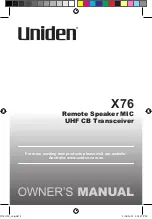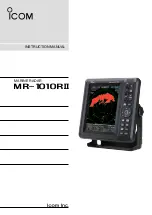
7
Nothing
comes close to a Cobra
®
6
English
VHF Marine Radio
Procedures
Voice Calling
VHF marine radio procedures
•
Maintain your watch
Whenever your boat is underway, the radio must be turned on and
be tuned to Channel 16 except when being used for messages.
Power
Try one watt first if the station being called is within a few miles. If there
is no answer, switch to a higher power. This will conserve your battery and
minimize interference to other users.
Calling coast stations
Call a coast station on its assigned channel. You may use Channel 16
when you do not know the assigned channel.
Calling other vessels
Call other vessels on Channel 16 or on Channel 9. (Channel 9 is preferred
for recreational vessel use.) You may also call on ship-to-ship channels
when you know that the vessel is listening on a ship-to-ship channel.
Limits on calling
You must not call the same station for more than 30 seconds at a time.
If you do not get a reply, wait at least two minutes before calling again.
After three calling periods, wait at least 15 minutes before calling again.
Change channels
After contacting another station on a calling channel, change immediately
to a channel which is available for the type of message you want to send.
Station identification
Identify, in English, your station by your FCC call sign, ship name, the state registration
number or other official number at both the beginning and end of each message.
Prohibited communications
You MUST NOT transmit:
■
False distress or emergency messages.
■
Messages containing obscene, indecent or profane words or meaning.
■
General calls, signals or messages (messages not addressed to a particular
station) on Channel 16, except in an emergency or if you are testing your radio.
■
When you are on land.
Voice calling
•
To call another vessel or a shore installation such as a lock or bridge tender:
■
Make sure your radio is on.
■
Select Channel 16 and listen to make sure it is not being used.
NOTE
Channel 9 may be used by recreational vessels for general-purpose
calling. This frequency should be used whenever possible to relieve
congestion on Channel 16.
■
When the channel is quiet, press the Talk button and call the ship you wish to
call. (Hold the microphone a few inches from your face and speak directly into
it in a normal tone of voice — clearly and distinctly.) Say “[name of station
being called] THIS IS [your vessel’s name or call sign].”
■
Once contact is made on the calling channel, you must switch to
a proper working channel. See the channel listing on pages 14 through 15.
The vessel Corsair calling the vessel Vagabond:
Corsair: “Vagabond, this is Corsair.”
Vagabond: “Corsair, this is Vagabond. Reply 72 (or any proper working channel).”
Corsair: “72” or “Roger”
■
After communications are completed, each vessel must sign off with its
call sign or vessel name and switch to Channel 16.
NOTE
For best sound quality at the station you are calling, hold the microphone
on the front of the radio at least two inches [five cm] from your mouth
and slightly off to one side. Speak in a normal tone of voice.
Intro
Operation
Customer
Assistance
Warranty
Notice
Secondary Icons
Caution
Warning
Installation
Customer
Assistance
VHF Marine Radio Protocols
Intro
Operation
Customer
Assistance
Warranty
Notice
Secondary Icons
Caution
Warning
Installation
Customer
Assistance
VHF Marine Radio Protocols
Intro
Operation
Customer
Assistance
Warranty
Notice
Secondary Icons
Caution
Warning
Installation
Customer
Assistance
Intro
Operation
Customer
Assistance
Warranty
Notice
Main Icons
Secondary Icons
Caution
Warning
Installation
Customer
Assistance
For Example







































